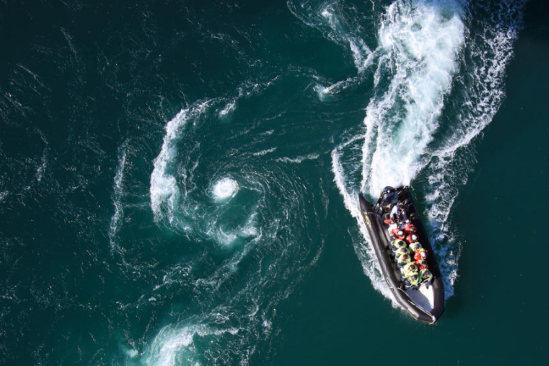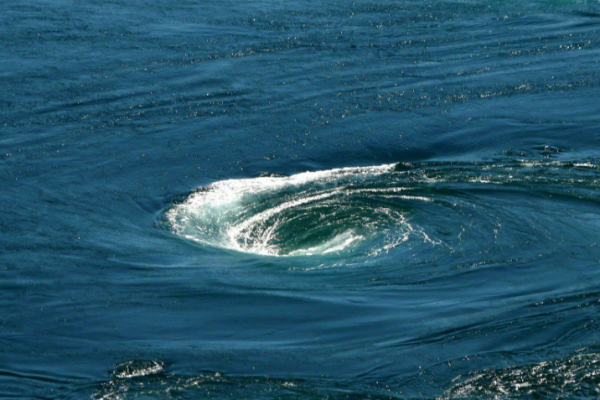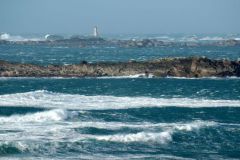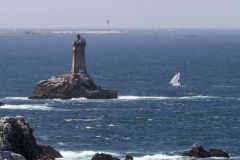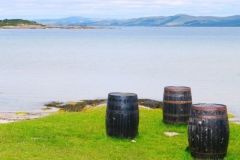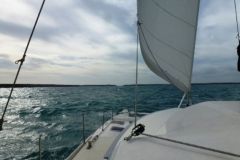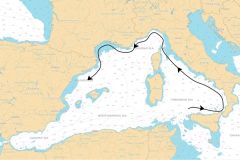Maelstroms, often surrounded by ancient legends, continue to captivate sailors and the curious. These powerful whirlpools, born of complex ocean currents and particular geographical configurations, can test the mettle of even the most experienced navigators. Their strength has made them symbols of the power of maritime forces. Here's an overview of 6 of the world's most famous maelstroms and their specific characteristics.
1. Saltstraumen (Norway)
Saltstraumen, near Bod°, is recognized as the world's most powerful maelstrom. This phenomenon is formed in a narrow 150-metre passage between two fjords, where impressive volumes of water flow every 6 hours (up to 400 million cubic metres). These masses of water create currents with speeds of up to 21 knots, generating whirlpools 10 metres in diameter. The site's unique geography, combined with tidal variations, makes it a popular destination for fishermen and the curious. However, these conditions represent a danger for unprepared boaters.
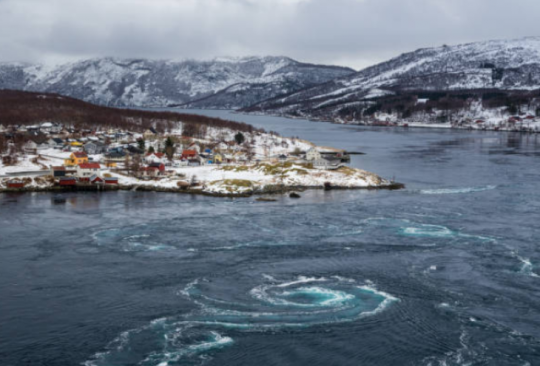

2. Old Sow (United States/Canada)
The Old Sow, located between Deer Island (New Brunswick, Canada) and Eastport (Maine, USA), is described as the largest natural whirlpool in the Western Hemisphere. It forms in the Western Passage of Passamaquoddy Bay, where the Bay of Fundy's impressive tides rush through a narrow passage. The complex underwater topography of trenches and mounds amplifies this phenomenon. With a diameter of up to 76 metres, the Old Sow is most visible during the highest tides, particularly when strong winds accompany them. The vortex is surrounded by several smaller vortexes called "piglets". These vortices are visible a few hours before high tide, and can be observed from land or by boat.
Although technically classified as a maelstrom due to its link with tidal flows and its magnitude, its behavior is also similar to that of a rapid in some cases. Navigators can traverse the area with care, using boats skippered by experienced captains, which has even led to the creation of an "Old Sow Survivor's Association" to reward those who manage to cross this tumultuous zone.

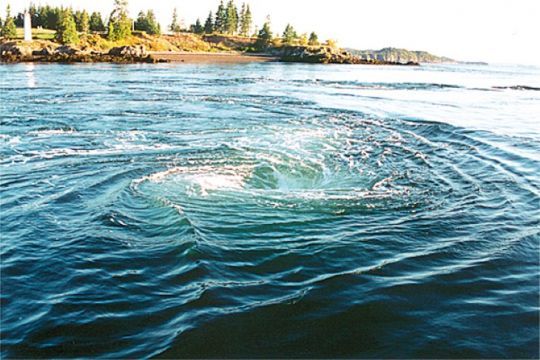
3. Moskstraumen (Norway)
Moskstraumen, one of the most powerful maelstroms known, is located off the Lofoten Islands in Norway. Unlike other maelstroms, which are often located in narrow straits, the Moskstraumen forms in the open sea. This phenomenon is the result of cold, salty North Atlantic waters meeting the warmer currents of the Norwegian Gulf. This interaction of water masses creates impressive whirlpools which, while spectacular, are not as powerful as some other maelstroms.
The phenomenon is also influenced by a number of geographical and marine factors. In particular, strong semi-diurnal tides play a key role, amplifying the intensity of currents. Another key factor is the particular shape of the seabed.
The Moskstraumen current forms at a depth of around 500 metres, before encountering a shallow ridge 20 to 60 metres deep, located on the Moskenes°ya, Mosken and VŠr°y islands. This ridge generates an upward movement of water, causing eddies to form around the edges of the islands. This geographical phenomenon, combined with the effect of the tides, intensifies currents and creates impressive vortexes. The currents, some 8 kilometers wide, are at their strongest in July and August. Their reported speed varies between 5 and 10 knots.
Although the dramatic aspect of this phenomenon has been greatly amplified by literary accounts such as Edgar Allan Poe's in A descent into the Maelstrom however, it remains particularly risky for unskilled sailors. Because of its unpredictability and its formation in the open sea, it is crucial to know the tide times and to be properly prepared for sailing in these waters.
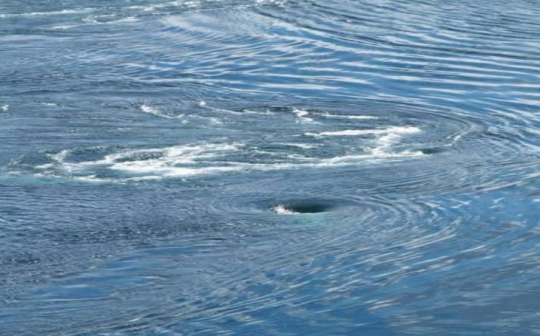
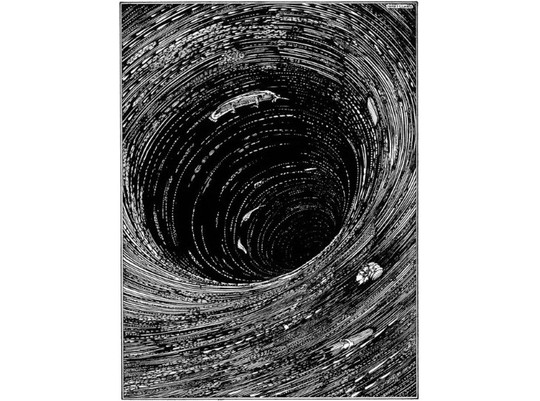
4. Corryvreckan (Scotland)
Corryvreckan is an impressive maelstrom located between the Scottish islands of Jura and Scarba, in the Corryvreckan Strait. The formation of these whirlpools is due to the presence, in the center of the strait, of a 170-meter-high basalt pillar forming a shoal 29 meters below water level, locally known as "The Old Hag". During spring tides, currents can reach up to 8 knots, generating waves of up to 5 to 8 metres. Changing weather conditions and the power of the water make this area particularly perilous for unprepared yachtsmen.
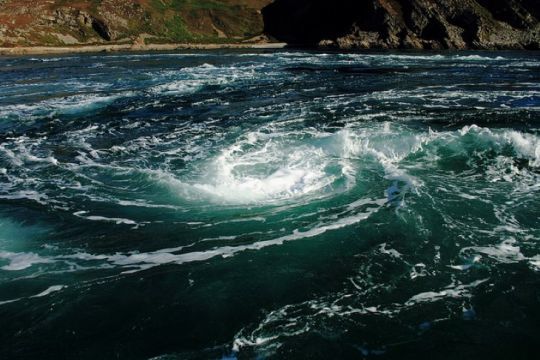
5. Naruto's whirlwinds (Japan)
Naruto whirlpools are found in the Naruto Strait between Shikoku Island and Awaji Island. They form when the tides of the Seto Inland Sea pass through this narrow strait, where currents reach up to around 10 knots. The vortices can reach 20 metres in diameter, making Naruto one of the world's most impressive whirlpools. These vortices inspired the name of the fish surimi narutomaki which in turn inspired the name Naruto Uzumaki of the manga and anime Naruto, " Uzumaki "meaning "spiral .

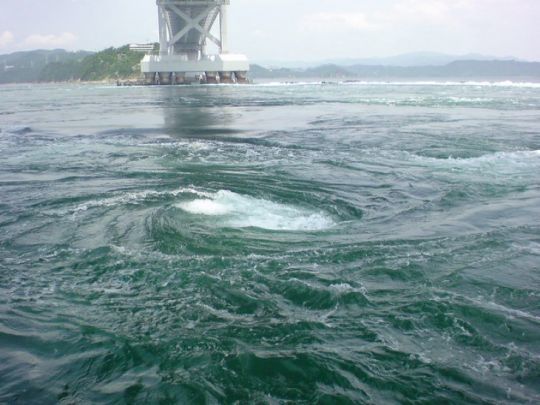

6. Garofalo (Italy)
The Garofalo, located in the Strait of Messina between Sicily and the Italian mainland, is a natural phenomenon linked to the powerful tidal currents that flow through this narrow waterway. Although often referred to as a whirlpool, it doesn't reach the magnitude of the more famous maelstroms, due to its relatively smaller size and intensity, with currents of up to 5-6 knots. However, this natural phenomenon has acquired historical and mythological notoriety, as it is linked to two of the most famous sea monsters of Greek mythology: Scylla and Charybdis. These mythological creatures, depicted as a sea chasm and a multi-headed monster, are believed to live in the Strait of Messina, where they made navigation perilous for ancient sailors. Although mythology has exaggerated the nature of these whirlpools, the Garofalo remains a subject of fascination for sailors and historians alike.
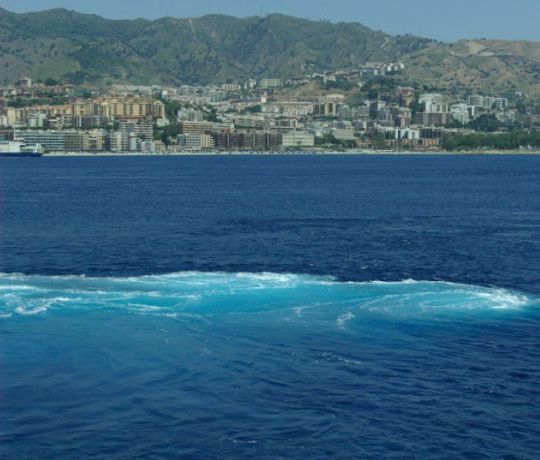
Maelstroms, wherever they may be in the world, embody the power of maritime forces. These phenomena deserve to be respected, observed and apprehended with constant vigilance.

 /
/ 

